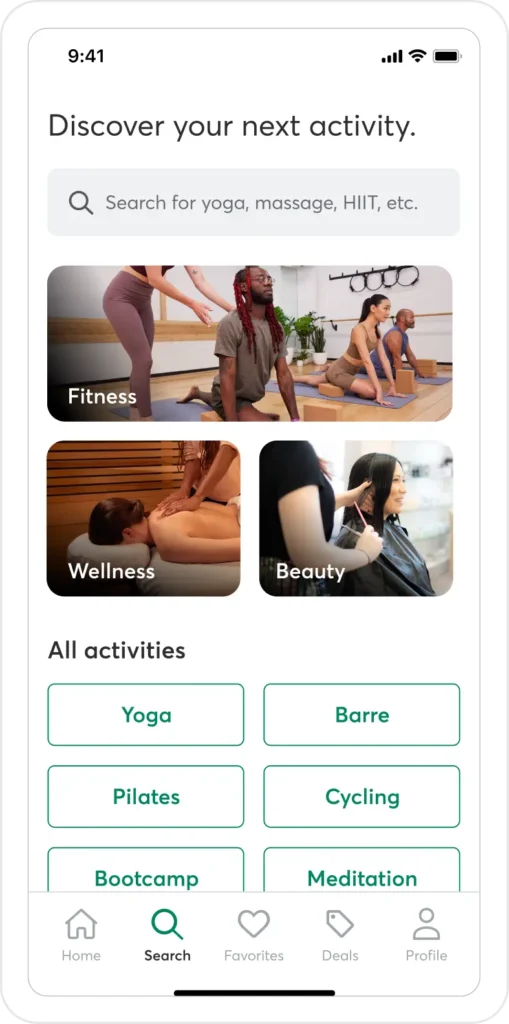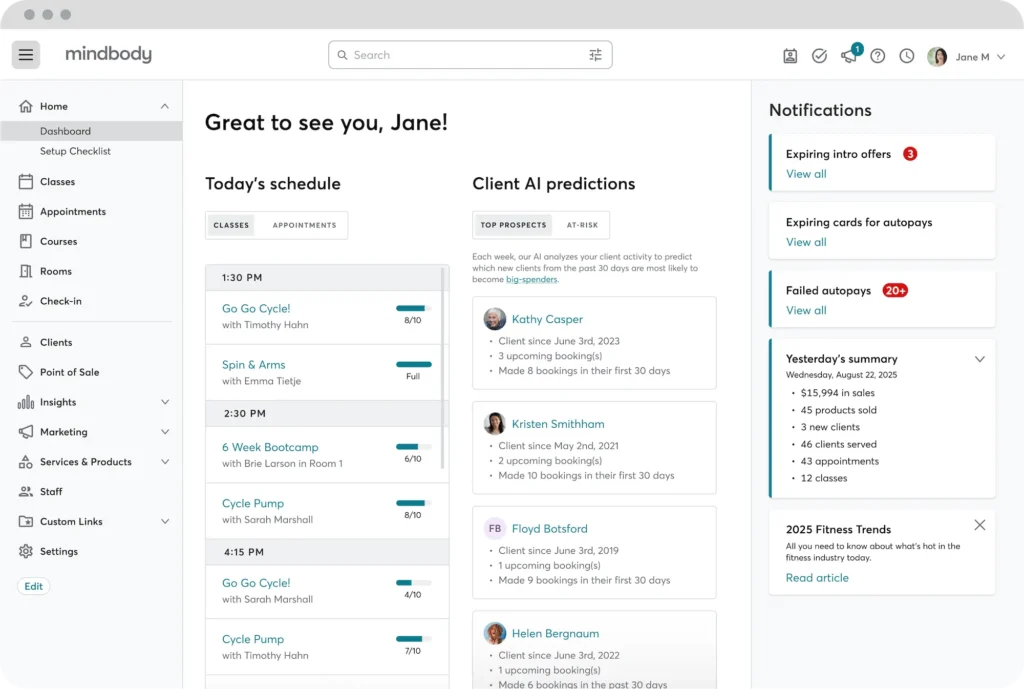Powering Your Back Office: Essential Strategies for Fitness Business Growth
Partnership
Sponsored By Mindbody

Mindbody helps operators transform software from a cost center into a growth engine–powering new revenue opportunities, streamlined operations and smarter scaling.
Growth in the fitness and wellness industry is often framed around flashy new spaces, sleek equipment and customer-facing innovation. But beneath the surface, the real driver of sustainable success is what happens behind the scenes.
When scheduling falters, payments stall or customer service lags, even the strongest member experiences crumble. Operators need stable systems that perform reliably, even during peak booking hours, fast support when issues arise and automation that lifts repetitive tasks off their plates. Over the past year, Mindbody has doubled down in these areas, achieving 99.9% uptime year to date.
Ultimately, back-office efficiency isn’t just an operational detail — it’s a growth strategy. Stronger infrastructure leads to steadier revenue, better retention and more time for owners to focus on scaling their business.
As Brian Fields, Chief Revenue Officer at Playlist (which includes Mindbody, ClassPass, and Booker), puts it: “The future of the wellness industry will be shaped by leaders who see technology not as a cost of doing business but as a partner in growth. The businesses that thrive will be those that streamline operations, leverage data and tap into platforms that drive both efficiency and revenue.”
“Zero-Cost Software” Potential

The centerpiece of that philosophy is what Mindbody calls “zero-cost software.” It’s a bold idea: technology that strives to not only pay for itself but also actively fuel growth.
“At its core, our ‘zero-cost software’ model is about transforming what has traditionally been a fixed expense into a true growth driver,” Fields explains. “When we say ‘zero-cost,’ we mean that our platform has the potential not just to pay for itself, but to generate recurring revenue that far exceeds the cost of the software.”
The key lies in the Mindbody app, which connects over 2.8 million active consumers directly to fitness, beauty and wellness providers. For operators, that means exposure to the largest pool of wellness shoppers in the world — a built-in marketing channel without the overhead of digital ad campaigns.
Tools like Promoted Intro Offers put businesses at the top of Mindbody app search results, helping convert new clients into long-term members at low cost and low risk.
According to Fields, the results speak for themselves. “We’ve found that our top customers completely offset their software costs with recurring revenue from clients who discovered them on the Mindbody app.”
A Pittsburgh-based multi-sport complex, M:7 Sports, provides a clear example. In its first year, the business scaled to nearly 500 members by leveraging Mindbody’s pricing, integrated tools and professional branding to convert more sales. By offsetting its software costs, M:7 Sports was able to reinvest directly in its growth.
“In practice, ‘zero-cost software’ means that a business owner can think less about covering overhead and more about scaling, expanding offerings, investing in staff or even opening new locations,” Fields says.
Solving Back-Office Pain Points
Despite the opportunity, many operators still struggle with the basics: fragmented systems, unpredictable revenue and limited access to capital. “Many owners juggle multiple tools for booking, payments, marketing and reporting, which makes it difficult to run efficiently or get a clear picture of performance,” Fields says. Mindbody addresses these challenges by unifying operations under one platform and layering intelligence on top.
With access to comprehensive booking data (having processed more than 700 million bookings last year), Mindbody has deep visibility into industry trends. AI and machine learning turn that data into insights — from predicting churn to highlighting the prospects most likely to become loyal spenders.
On the client-facing side, an integrated CRM helps businesses build long-term relationships, driving repeat visits and higher lifetime value. That dual value proposition — operating system plus marketplace — sets Mindbody apart.
And when revenue is unpredictable, an operator can choose to work with ClassPass — a Playlist company — to help fill unused spots with paying subscribers.
“ClassPass helps fill unsold spots with subscribers actively seeking out fitness and wellness experiences, turning empty classes or unused appointments into incremental revenue without adding administrative burden,” Fields explains.
For expansion, Mindbody Capital gives eligible operators in the US quick access to cash offers and advances without the red tape of traditional financing. They’ve already advanced more than $46 million in funds.

Investing in the Future
So where do operators reinvest the capital? Fields sees businesses putting capital into the areas that matter most: people, programs and long-term growth. “We see customers reinvesting in ways that build loyalty and scale. Some invest in staff training or upgraded facilities, while others expand into new programs or digital offerings. Many are also using Mindbody Capital to fund major initiatives like opening second locations or launching entirely new revenue streams.”
There’s also the value of time. By automating administrative tasks, Mindbody gives owners freedom to step out of the weeds. “Our goal is to give operators the breathing room to do it all,” Fields says.
In the end, Mindbody is making a simple but powerful case: the back office can be just the opposite of a cost center.
“Mindbody’s vision is to empower every customer with the tools and marketplace reach to turn software from a line item on the expense sheet into a source of growth,” Fields concludes. “Our desire to become a ‘zero-cost software’ is about more than reducing fees — it’s about reimagining what technology can do for the industry.”



